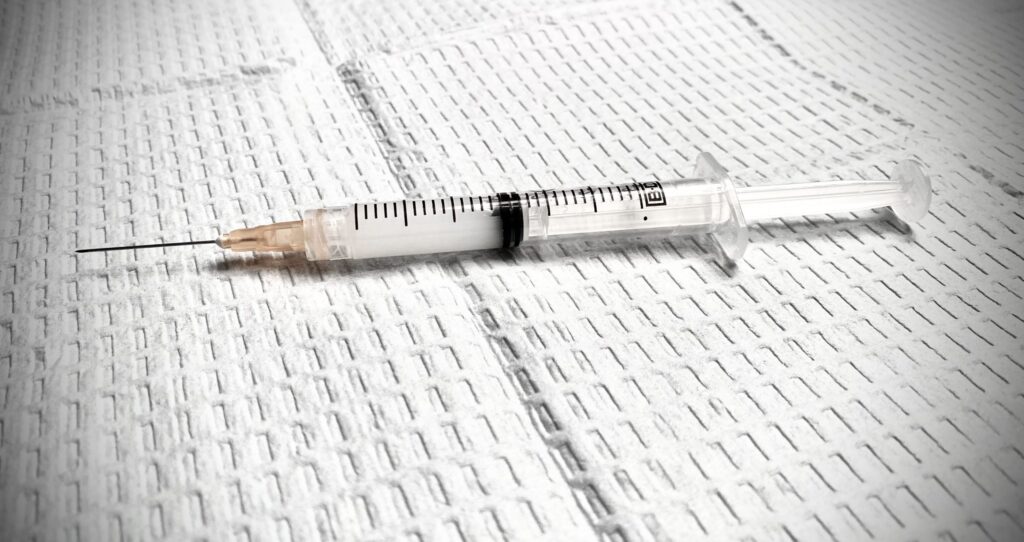At Raleigh Hand Center, we don’t just treat hands. We are dedicated to helping patients with…
First of all, what is a cortisone shot? A “cortisone shot” is an injection of a corticosteroid medication that is typically mixed with a local anesthetic numbing medicine. The injections are used to reduce pain and inflammation in the musculoskeletal system. Cortisone shots are common treatments for conditions including tendinitis, arthritis, and irritated nerves.
But, are cortisone shots safe? Yes. Like any medication, cortisone shots have risks and side effects, but they are considered to be safe when used appropriately.
How do cortisone shots work?
Corticosteroid medications are strong anti-inflammatories. In many musculoskeletal conditions, if the inflammation is reduced, the symptoms of pain decrease. This reduction in pain and inflammation may facilitate rehabilitation of the area guided by physical therapy or occupational therapy. This treatment can promote movement, range of motion, and activities which are beneficial to the patient.
By themselves, cortisone shots usually do not fix the underlying condition. However, by breaking the cycle of pain, swelling, and inflammation, they can allow the patient to participate in healthy activities which promote healing with less pain.
Take osteoarthritis in the knee, for example. We know that osteoarthritis is a degenerative disease in which cartilage degrades in weight bearing areas and there is inflammation of the joint lining. This condition can result in pain, limited range of motion, and reduced ability to walk. Doctors do not have a cure for this condition, other than a knee replacement. However, a cortisone shot may reduce the inflammation in the knee joint, improving pain, range of motion, and physical function. Patients can then participate in therapy with less pain and attempt to maintain their improved function for the long term.
Thumb osteoarthritis is another good example. At the base of the thumb there is a specialized joint called the CMC joint. This joint allows for thumb opposition range of motion, which is critical for buttoning buttons, opening jars, and most fine motor tasks. The wear and tear in this joint which we use every day leads to osteoarthritis over time. A cortisone injection into the thumb CMC joint can reduce pain and inflammation, allowing the patient to function more effectively and with less pain.

In some soft tissue conditions, such as trigger fingers and DeQuervain’s wrist tendonitis, a cortisone shot or two can fix the underlying problem and make the condition go away completely.
Are cortisone shots safe?
Cortisone shots have low risks of complications if used carefully. Like any medication, cortisone shots have risks and side effects, but they are considered to be safe when used appropriately. There are a few common side effects with cortisone shots. Diabetic patients should be aware that there can be an elevation in blood glucose levels for a few days afterwards. Some patients can experience insomnia or a “hyper” feeling similar to having too much caffeine or coffee. Another side effect is facial “flushing” or redness/warmth to the head and neck area. These side effects usually resolve on their own in a few days. Infection following a steroid injection is possible but very rare.
Steroid injections can cause thinning and atrophy of the skin and soft tissues at the injection site. Occasionally patients with darker skin may develop an area of pale skin discoloration known as hypopigmentation at the injection site. While most of these side effects improve over a few weeks or months, sometimes they are permanent. Certain types of cortisone shots are more prone to these particular complications than others.
Additionally, there are known risks with cumulative steroid injections. Multiple cortisone injections into the same area can do more harm than good. These complications include damage to the articular joint cartilage and weakening of the ligaments and tendons.There are cases of tendon and ligament rupture in patients who have had multiple cortisone shots into the same soft tissue area. However, if the injections are used sparingly, and separated by several months in time, these risks and complications can be minimized.
How many cortisone shots are safe in a lifetime?
There is not a consensus on the maximum number of cortisone shots a patient may receive into one area over a lifetime. For many orthopedic surgeons, this number is three. However, this number is not “set in stone,” and there are many other factors to consider when deciding how many injections is reasonable for each patient.
For soft tissue conditions, such as trigger fingers, DeQuervain's wrist tendonitis, carpal tunnel syndrome, and tennis elbow, up to 2 injections are considered safe. More than three injections may have more risks in these cases. For osteoarthritis on the other hand, as long as the injections are providing significant, long-lasting relief, and the patient prefers to avoid surgery, there is not a specific limit to this treatment. Of course, if the injections are no longer working, it does not make sense to keep giving them. Surgery is often considered if the injections are no longer helping and the symptoms are not tolerable to the patient.
Are cortisone shots safe during pregnancy?
Many women develop hand and wrist conditions during pregnancy. These include carpal tunnel syndrome and DeQuervain’s wrist tendonitis, among other inflammatory conditions. Cortisone shots are commonly used to treat these conditions, even during pregnancy and while breastfeeding. Patients may wish to consult with their OB/GYN doctor if they have concerns. Additionally, most pediatricians allow mothers to receive a cortisone shot while their baby is breastfeeding. Patients may wish to check with their baby’s pediatrician if they have concerns.
Are cortisone shots safe for diabetics?
Diabetic patients need to be aware that blood sugar levels can increase after a cortisone shot. The hyperglycemia effects can last several days. Patients who have elevated blood sugars at baseline are at higher risk of this complication. Larger steroid doses also increase this risk. Patients should monitor their blood sugars closely and treat hyperglycemia appropriately. Follow-up with a primary care physician or endocrinologist may be necessary in uncommon cases.
How long does a cortisone shot last?
The amount of relief with a cortisone shot is variable. In some cases, such as a trigger finger or De Quervain's wrist tendonitis, one cortisone shot may relieve the symptoms for good. However, for arthritic conditions, such as thumb joint arthritis, the injections often wear off in about 3-4 months or so. We know that cortisone shots are not a cure for arthritis, but they can improve pain and quality of life.
Updated 7/14/2025


